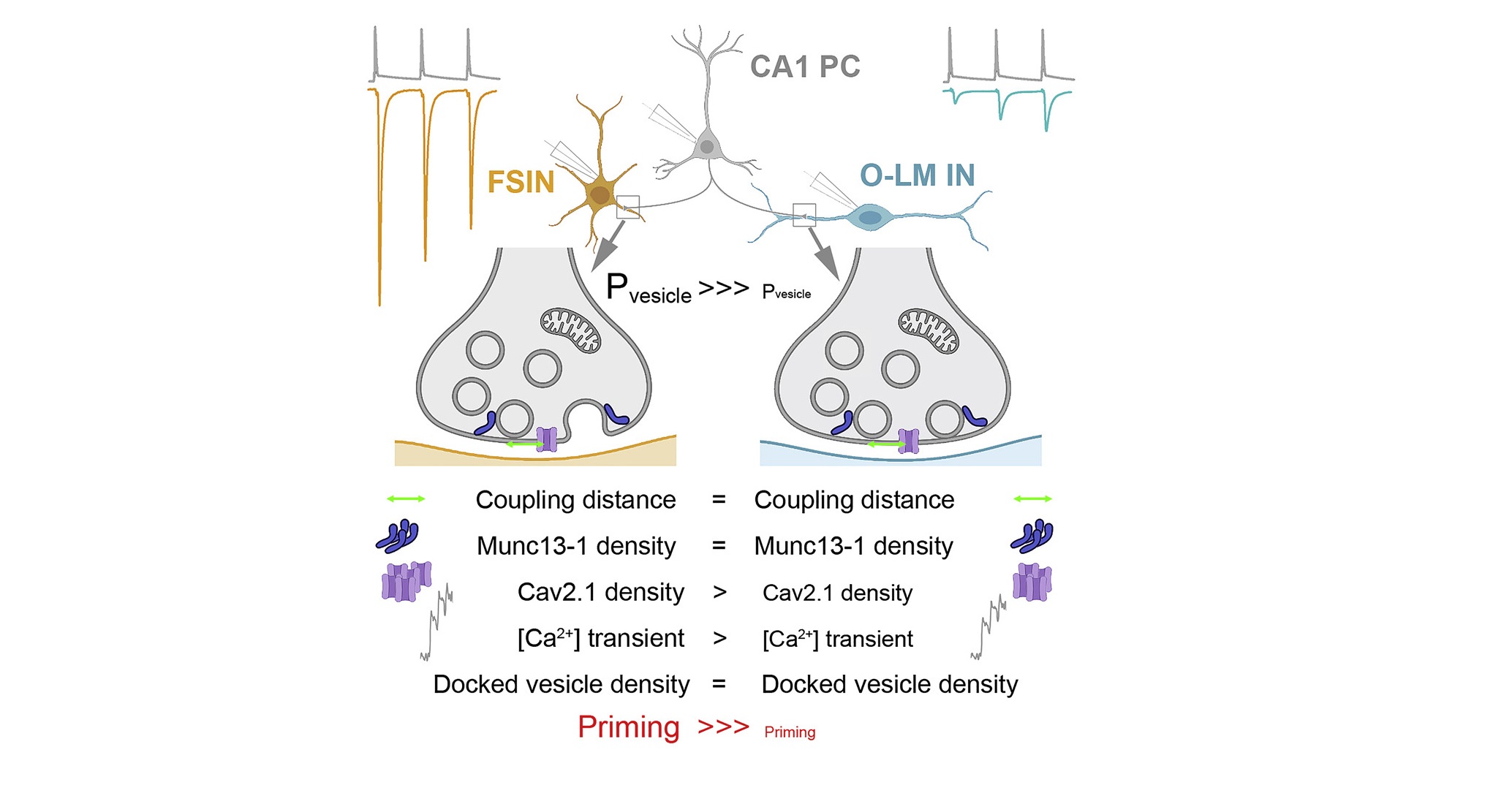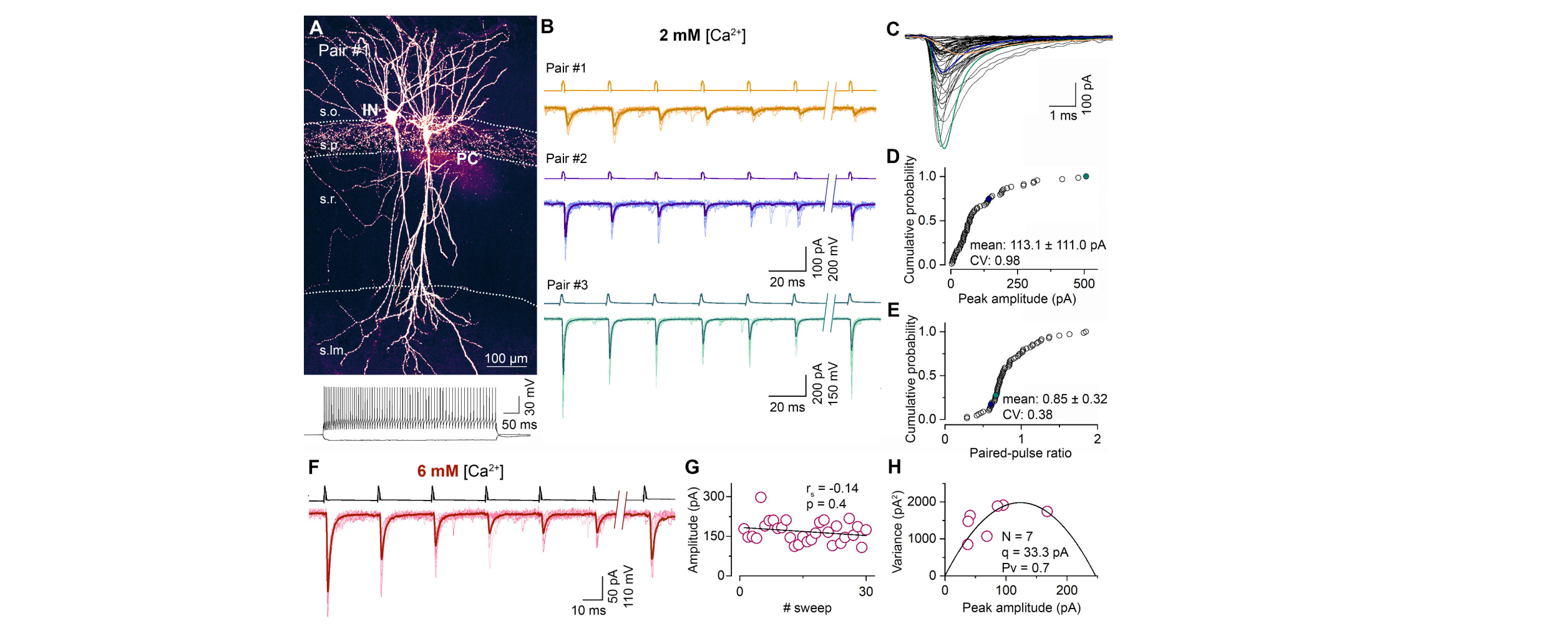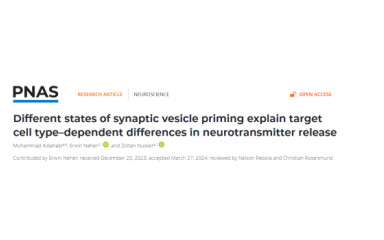Our new new study on synaptic phisiology is out in PNAS
Synaptic diversity is a key feature of neuronal networks. Diversity stabilizes network activity and increases computational capacity. A most intriguing example of synaptic diversity is the dependence of presynaptic release probability (Pv) and short-term plasticity on the postsynaptic target cell type. Two terminals of the same axon, separated by few microns only, release glutamate with an order of magnitude difference in Pv, depending on the type of the postsynaptic target cells. This was previously explained by differences in the probability with which fusion-competent vesicles are released by an action potential. Here, we test and confirm the hypothesis that a much larger contribution to diversity resides in vesicle priming, thus expanding the parameter space, which can contribute to synaptic diversity.











